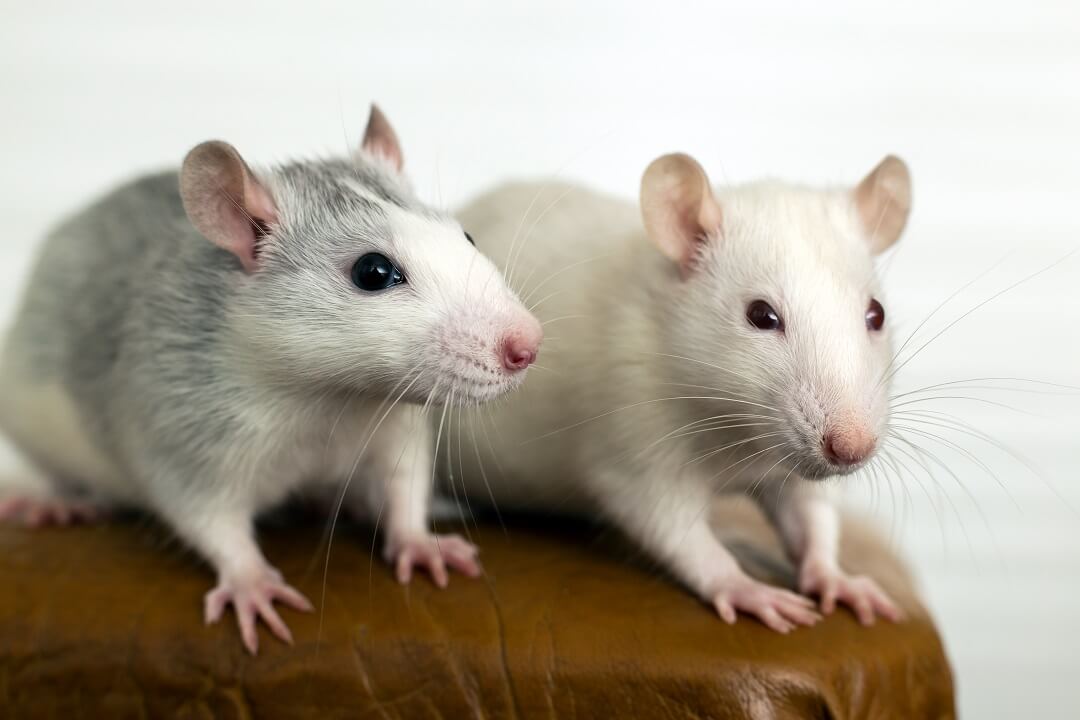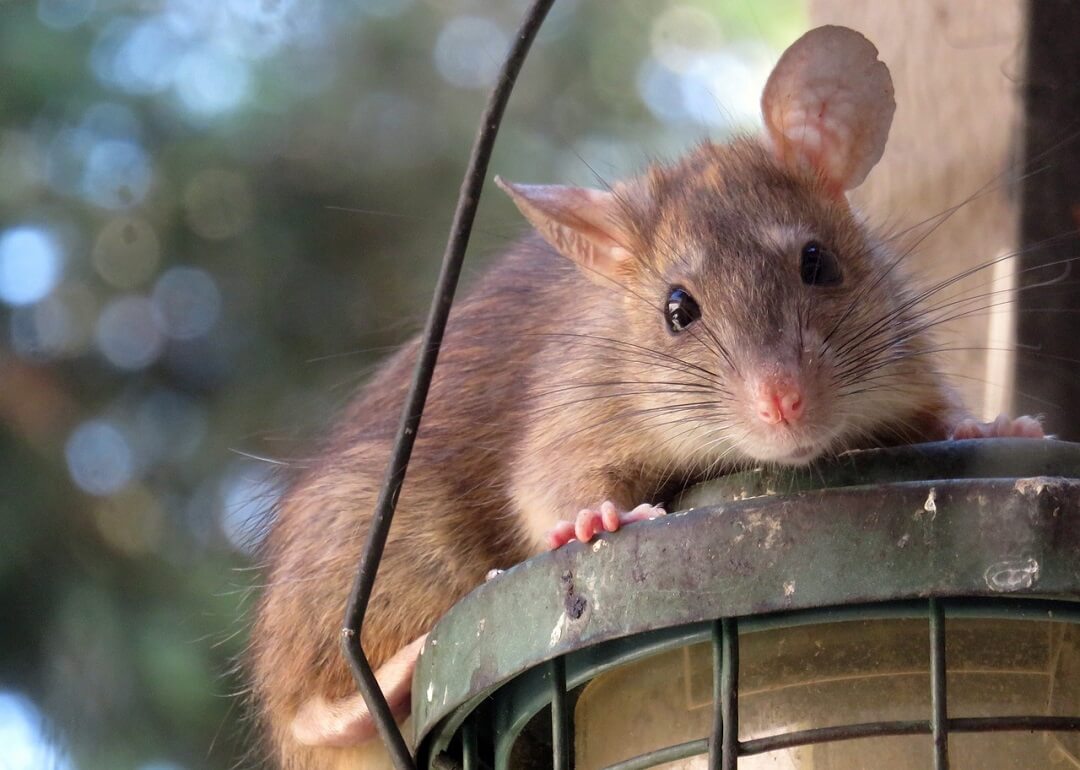No homeowner wants to find a rat scurrying across their floor in the middle of the night or hear the scratching sounds of a rat within the walls.
Unfortunately, many homeowners are putting out the welcome mat for mice without even knowing it. These rodents enter homes in search of food, water, and shelter, meaning there is a wide range of things that could be attracting rats to your front door. This can include everything from fruit trees in the yard to your pet’s food bowl.
Here we take a closer look at eight of the most common things that attract rats to your home and what you can do to help put out a “no vacancy” sign for the rats.
Key takeaways
- Rats are attracted to homes because they offer shelter, food, and water sources.
- Rats can enter homes through small cracks, holes, and vents, and can nest in walls and ceilings.
- To prevent rat infestation, homeowners should seal potential entry points, store food in sealed containers, and clean up clutter and nesting materials.
- Rats dislike specific scents like peppermint, lavender, eucalyptus, and cedarwood chips, which can work as natural deterrents.
- Professional pest control services can help identify and eliminate rats in and around the home.
8 things attracting rats to your home
When a rat makes its way into your yard and home, it is on the search for a quality source of food and water, as well as a place to call home that offers shelter from predators and a good nesting location. Unfortunately, there are some things you may not even realize can make your home more attractive to rats.
1. Easy entry
When it comes to entering a home, rats look for places that are easy to access. Given that rats can squeeze through small spaces, this opens up the door to many points of entry. Examples are areas with cracks in the foundation, holes in the screens, openings around pipes and cables, and vents into attics or crawlspaces. If they are desperate to get in, rats will also chew through wood to create their own access points into your home. Locating and sealing all potential points of entry will help keep rats out.
2. Shelter and safety
Chances are you run your heat or air conditioning in order to offer comfort during the summer and winter months. Unfortunately, this regular climate control also offers comfort to rats. In addition, your home provides many secure locations, such as inside walls, that offer rats protection from predators as well as undisturbed areas to nest and raise more rats.
3. Easy access to food sources
Just as your kitchen pantry provides food for you and your family, it also offers a buffet for rats. These rodents will eat just about anything, and your kitchen offers a wide range of food sources to choose from. Even dirty dishes in the sink or an open trash bin can provide a food source for rats. A full pantry is like the winning lotto ticket to a rat and, even if food is in unopened packages, they will simply chew through to find their next meal. Keeping pantry food in thick and sealable containers will help make your pantry less appealing to rats.
Pet food also provides a perfect source of rat food. It is a good idea to store pet food in plastic containers and not leave out food bowls for extended periods throughout the day.
4. A regular water source
In addition to needing a food source, rats also need water to survive. Leaking pipes can attract rats into your home, as can sinks and tubs that are slow to drain or that retain water and offer a regular drink to rats.
5. Access to garbage and pet waste
As we have said, rats will eat anything. This includes not only garbage but also pet waste. Keeping garbage bins sealed and picking up pet waste in the yard will help make your home less appealing to the rats.
6. Abundant nesting material
Female rats looking to nest will need materials. Your home offers a wide range of materials perfect for making her nest. This can include everything from insulation within your walls to paper or cardboard found throughout the home. Reducing the clutter around your home and eliminating easy access to these materials helps to make your home less than ideal.
7. Fruit and nut trees and indoor plants
Fruits, nuts, and seeds provide a food source for rats. Fruit and nut trees in your yard provide a consistent food source, and trees near the home also provide a pathway for roof rats to enter. Indoor plants can also serve as nesting material. These are similar to grasses and leaves which use to make outdoor nests.
8. Compost piles
As we have said, rats will eat just about anything. If you have a compost pile in your yard or a compost container in your kitchen, these can also be a major draw for rats. Decomposing food scrapes provide an excellent food source for these rodents.

Types of rats that enter houses
In Ventura County, there are two species of rats that enter homes. The Norway rat is the largest, weighing between 9-18 ounces and brown to reddish gray in color. Outdoors these rats live in burrows or in leaf or wood piles. When they move indoors, they prefer lower levels of the home, including basements.
The roof rat is the most common rat found in our area. These rats are smaller than the Norway rat, ranging from 5-10 ounces. They have very slender bodies and can range in colors from white to gray. These rats are nocturnal and look for elevated places for nesting. They are good climbers and will look for elevated openings around your home. Inside they will nest inside walls and ceilings, and you are more likely to find these rats up inside your kitchen cabinets.
Rat control and prevention
Once you understand what attracts rats to your home and yard, you can work to make your home less appealing and work to prevent rat infestation. Some common rat prevention options include:
- Seal all potential entry points.
- Store pantry food in sealed containers.
- Store pet food in sealed containers and pick up food bowls immediately after your pet eats.
- Securely close all garbage containers.
- Pick up pet waste and dispose of it regularly.
- Move compost areas away from home.
- Trim tree branches away from home and pick up ripened fruit or nuts from the ground.
- Clean up clutter and remove piles of papers or cardboard, which can be used as nesting material.
- Remove leaf piles and move wood piles away from home.
- Move birdbaths, birdfeeders, and birdseed away from your home or eliminate them completely.
To learn more about rat control, read What is the Best Way to Get Rid of Rats?

Frequently asked questions
Here we answer some of the most common questions we receive from homeowners when it comes to rats and rat infestations.
What attracts rats instantly?
Rats are constantly looking for a regular food source. Outdoor fruit and nut trees, open garbage cans, and even a BBQ with food residue can initially serve as an attractant to rats. Once they find food, they will look for a place to call home that is close to the food source, making your home a prime target.
What scent will keep rats away?
Rats have a very sensitive sense of smell, and they dislike specific scents and can work as a natural deterrent. These can include peppermint oil, lavender, eucalyptus, and cedarwood chips. Using cedarwood chips in your landscape can act as a natural deterrent, and plants such as peppermint, lavender, and eucalyptus can also make your home less appealing to rats.
What are rats scared of?
Rats have many natural predators, such as birds of prey and pet cats. But they are also very afraid of humans. If they move into a home, they will look for areas with the least activity and only become active when you and your family are asleep.
How do you keep rats away from your home?
Using rat deterrents, sealing points of entry, and making your home less appealing to rats are the best ways to help keep rats away from your home.
Making your home less attractive to rats
As a homeowner, your home is your sanctuary and the last thing you want to find is a rat. Understanding what attracts these pests allows you to take steps to make your home less appealing to rats and reduce your risk of rat infestation. If you find that rats are still making their way into your home, there may be an underlying problem you are not finding, and it may be time to call in professional rat and pest control services.
Helping to keep your home rat-free
At Insight Pest Management, our team of expert technicians understands the behavior of both the Norway and roof rats found in this area. They can effectively find and track these rodents in and around your home, helping to identify which rats are giving your problems. Once identified, our technicians will work to eliminate the pests and help ensure that they do not return. Click here to get a free quote.


